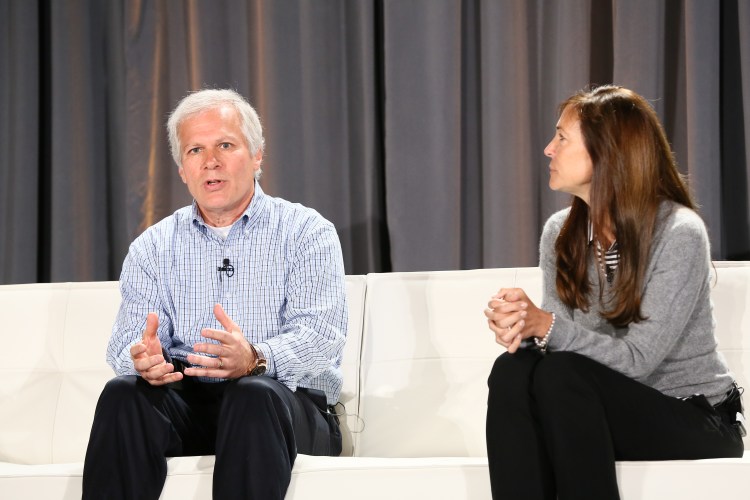SAN FRANCISCO — For Charles Schwab and Men’s Wearhouse, marketing now means collecting oodles of data about their customers’ every interaction with all parts of the company to create their identities.
Finance company Charles Schwab tracks its customers’ interactions with its website, branches, and other assets to measure how customers feel about Chuck’s services, big-data SVP John Carter said onstage today at VentureBeat’s DataBeat conference.
For a services-based business, optimizing every way in which its customers interact with the company is core. Such optimization is how Charles Schwab can figure out who each customer is and how to better serve them (i.e., get them to spend and keep spending on said services).
Carter also admitted that due to the high level of regulation of his company’s industry, the company has not yet dipped into their customers’ and prospects’ social media and other public (and semi-public) data. Instead, when a prospect visits the website, “They are a cookie,” and if they come back and input an email into a form field, Charles Schwab can legally begin to flesh out their identity.
Men’s Wearhouse digital EVP Susan Neal echoed these sentiments.
“One of our big initiatives when I got the to the company was, ‘How do we pull together all of our customer information?'” said Neal. Fortunately, the company has a loyalty program, which Neal and the company heavily use as an identifier and source of data about customers.
Neal added that personalization is one of the primary uses of customer data. For example, emails now have recommendations personalized for the recipients, and website customers will soon get real-time personalization, too, added Neal.
But it’s still a work in progress. “I think, particular for us, we aren’t a cataloger. We hadn’t done direct-to-consumer. … Data is not something the company was used to,” said Neal.
Moreover, customers not always identifying themselves by submitting names and emails makes personalization and recognizing them still challenging.
This is an interesting use of data to compare to the data-based sales optimization we heard about in other talks at DataBeat. While they appear to be doing very different things with data, they are both ultimately optimizing for sales and their bottom line. The former group wants to offer customers the perfect product, while the latter group is focusing on reaching them just are the right time when they’re most open to spending their money.


